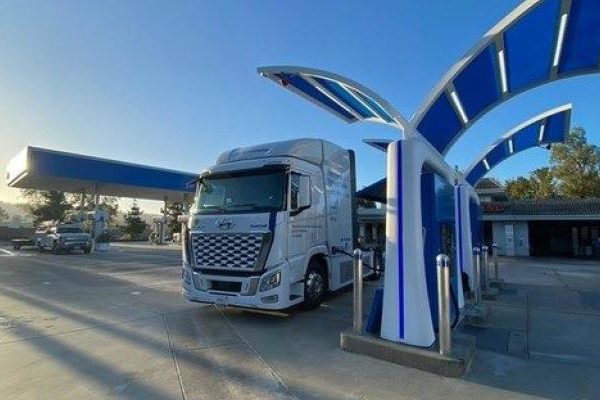
It’s common knowledge that the global dependence on fossil fuels is a challenging predicament. Fossil fuels account for 80% of the world’s energy consumption — so it’s understandable that transitioning to alternative energy sources won’t happen overnight.
However, one viable option making its way into the spotlight is fuel cells. Governments around the world are funding research and development efforts related to fuel cells and what role they could play in the energy sector.
New research suggests fuel cell adoption could ramp up in the coming years and gain much-needed traction in the agriculture industry. Learn more about fuel cells, potential challenges with widespread adoption and how a recent study could change the trajectory of global fuel cell development.
What’s Holding Back Widespread Fuel Cell Adoption?
Thus far, the global energy industry and prominent world leaders have dragged their feet regarding fuel cell adoption. Initiating the massive transition from fossil fuels to other energy sources is undoubtedly a monumental task. However, maintaining the viability of the planet’s future is at risk.
Many experts agree countries need to reduce their reliance on fossil fuels or the worst consequences of climate change will be inevitable worldwide. Fuel cells have yet to penetrate the industries that make up critical infrastructure, but why?
What’s interesting about modern hydrogen fuel cells is this technology is not new. In fact, NASA leveraged fuel cells during its crewed space missions back in the 1960s. However, there are a few reasons why fuel cell technology is not as ubiquitous as other energy sources.
According to Amy Adams — vice president of Fuel Cell and Hydrogen Technologies at Cummins Inc. — four challenges are holding back fuel cell adoption:
- Technical readiness
- Infrastructure readiness
- Government regulation
- Total cost of ownership
Hydrogen fuel cells have significant potential in the agricultural industry. A 2014 study found that crop resistance to pests and disease can vastly improve when irrigated with hydrogen water.
As a result, professionals in agriculture would benefit from using a pesticide substitute or reducing the use of pesticides. Many now understand certain pesticides can create adverse side effects on crops, so this could be a game-changer.
There are several benefits to reap by using fuel cell technology, according to the Fuel Cell and Hydrogen Energy Association (FCHEA), including:
- Low-to-zero Emissions
- Reliability
- High Efficiency
- Durability
- Scalability
- Fuel Flexibility
- Quiet Operation
- Energy Security
The RIKEN Center for Sustainable Resource Science (CSRS) — New Research Could Spark Fuel Cell Adoption
Is it possible to increase the adoption of fuel cell technology? Researchers in Japan may be the missing piece of the puzzle.
Ryuhei Nakamura and a team of researchers at the RIKEN CSRS recently developed a sustainable and practical way to produce hydrogen from water. Traditionally, methods to accomplish this required using rare metals that are either expensive or low in supply.
Instead, the new method uses two fairly common metals — manganese and cobalt. Researchers could use these metals to create hydrogen for fuel cells and agricultural fertilizers.
Hydrogen is a key ingredient required to produce the ammonia in virtually all synthetic fertilizers. However, ammonia plants depend on fossil fuels for hydrogen production instead of using hydrogen cleanly extracted from water.
Removing hydrogen from water occurs in a process called electrolysis. This process is expensive and unsustainable, meaning fuel cell adoption rates are still relatively low. Additionally, there’s a lack of suitable active catalysts that can withstand the acidic environment needed for hydrogen extraction.
The RIKEN researchers began their search for a viable catalyst for electrolysis — and they found one after trial and error. The team discovered it when they inserted manganese — a widely available metal — into the spinel lattice of cobalt oxide. The end product was a mixed cobalt manganese oxide catalyst that performs very well and is effective for practical applications.
Pushing for Widespread Hydrogen Fuel Cell Adoption
As for the next steps, the researchers plan on analyzing ways to extend this new catalyst’s lifetime and increase its activity level to serve as a viable alternative to traditional electrolysis.
The time is now to leverage the power of hydrogen fuel cells. World leaders and major companies need to fund more research and development efforts like those at the RIKEN CSRS.


Jane Marsh, Contributor
The views and opinions expressed herein are those of the authors and do not necessarily reflect the official policy or position of Fuel Cells Works, its directors, partners, staff, contributors, or suppliers. Any content provided by our contributors or authors are of their own opinion and are not intended to malign any religion, ethnic group, club, organization, company, individual or anyone or anything.
Read the most up to date Fuel Cell and Hydrogen Industry news at FuelCellsWorks




